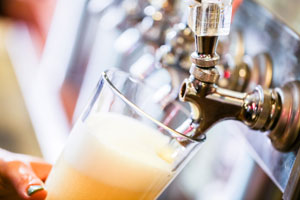

If you are looking to install a draft beer dispensing system in your Buffalo- or Rochester-area bar or restaurant, it’s easy enough to hire a professional to do the job (and we strongly recommend that you do just that).
But while you’re doing that, it’s also a good idea to study how your draft beer dispensing system actually works. To help you do that, here are basic descriptions of some of the key elements in a commercial draft beer dispensing system.
If you have any questions about beer dispensing set-ups, contact the Irish Carbonic Beer Division today.
Here are the parts of a typical beer dispensing system:
Ready to install or replace a new beer line system in your bar or restaurant? We can help! Contact us today for a FREE, no obligation estimate on a custom beer line installation for your Buffalo- or Rochester-area hot spot!